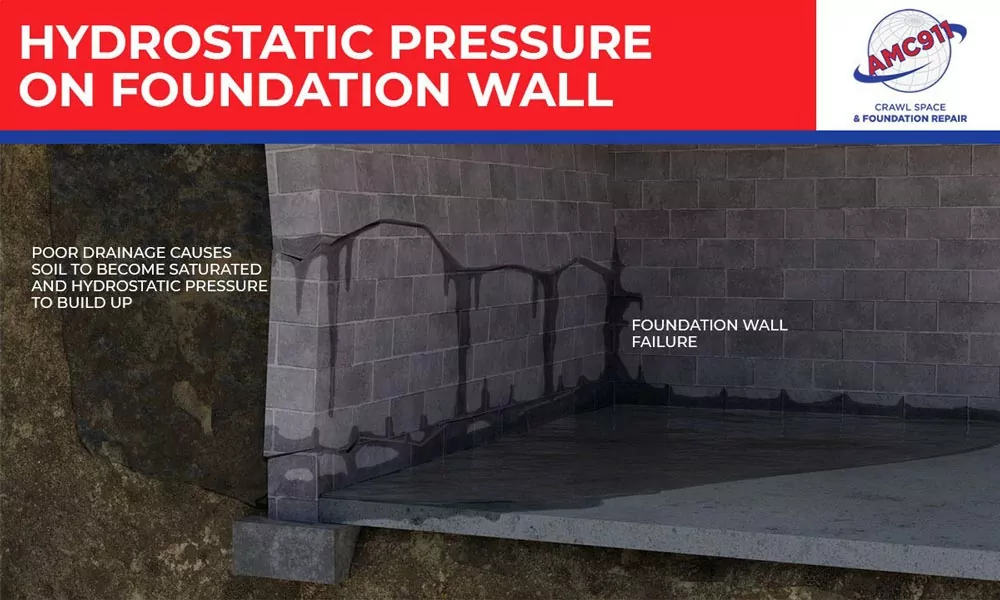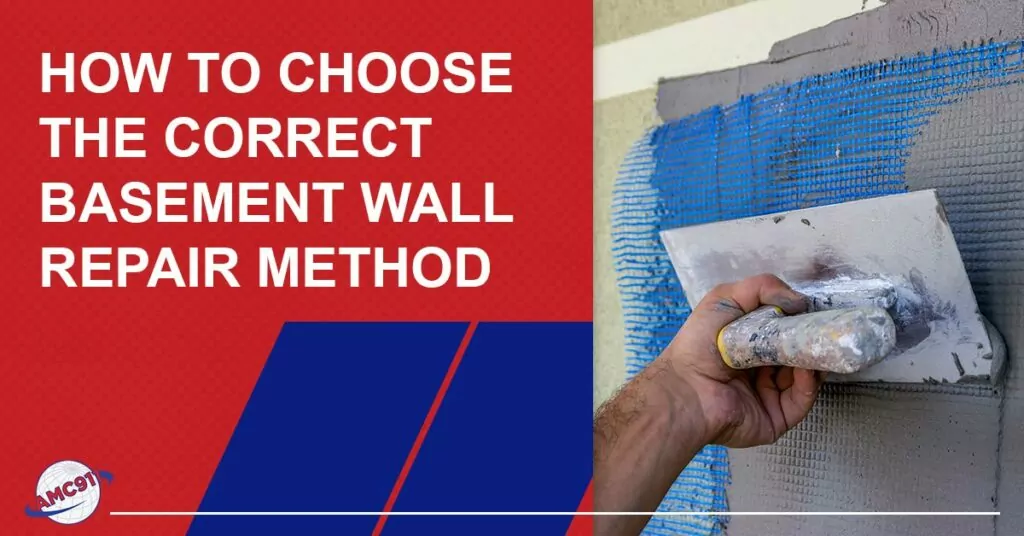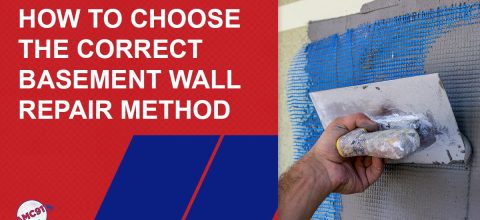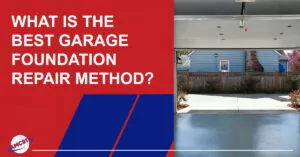Discovering cracks or damage in your basement walls can be a homeowner’s nightmare. It’s not just the immediate aesthetic concern; these issues can signal serious structural problems that, if left unaddressed, could jeopardize the integrity and safety of your entire home. Fortunately, with the right knowledge and approach, choosing the correct basement wall repair method doesn’t have to be a daunting task.
Whether you’re experiencing minor cracks caused by shrinkage, or facing more severe damage from water intrusion or foundation issues, this blog post is here to guide you through the complexities of basement wall repairs.
Understanding the root cause of the damage, assessing the extent, and selecting a repair method that not only addresses the current issue but also prevents future problems, are crucial steps for every homeowner. With our expert advice, you’ll be equipped to wisely navigate the maze of options, securing your home’s foundation and giving you peace of mind.
Why is Basement Wall Repair Sometimes Necessary?
The following are two common reasons why basement wall repair is sometimes necessary:
Differential Foundation Settlement: Differential settlement is when a foundation settles into the ground unevenly. This could be due to soil erosion, inadequate construction techniques, and other problems. Differential settlement can result in various issues affecting almost every part of the home, including the basement walls.

Hydrostatic Pressure: When you have excess water in the soil around the foundation, hydrostatic pressure can build up and push against the basement walls. The soggy soil can be caused by improper drainage techniques, broken pipes, and other problems that cause water to build up in the ground around the foundation. A common sign of hydrostatic pressure is a long, horizontal crack in the basement wall. Due to the pressure, you may also have issues with buckling or bowing of the basement wall. If it isn’t repaired, the foundation could fail.

Is the Basement Wall Damage Structural or Superficial?
Not all basement wall cracks are structural. Some are just unsightly and don’t threaten a home’s structural integrity. Here’s the difference between the two:
Non-structural Cracks: This type of crack is often caused by concrete curing. As the concrete cures, it shrinks, and it can lead to hairline cracks in a poured concrete foundation wall.
Generally speaking, a nonstructural crack will be hairline, and as you monitor it, you will notice that it isn’t growing. If your foundation is built using cinder blocks, a non-structural crack will usually be limited to a single cinder block.
Nonstructural cracks are not typically something to be overly concerned about, but they can cause problems. Those problems include the possibility of water seepage through the wall, especially if hydrostatic pressure has built up in the ground around the foundation.

Structural Cracks: A structural basement wall crack affects the integrity of the foundation. Structural cracks commonly occur as a result of hydrostatic pressure. Other common reasons why structural basement wall cracks occur include improper construction techniques, expansive soil, frost heave, and something heavy parked next to the foundation.
Structural cracks are often wider, and they grow over time. They will likely appear as horizontal or stair step cracks, particularly in block or brick walls. Large diagonal cracks may also be a sign of problems.
Basement Wall Repair Methods
The type of basement wall repair method you use will depend on what caused the problem. If a significant issue occurs because of foundation settlement, underpinning may be required. If the problem was caused by hydrostatic pressure, options include wall plate anchors, carbon fiber straps, and epoxy injections.
Underpinning: Underpinning using push or helical piers is used to stabilize a foundation experiencing differential settlement. After the piers are inserted into the ground and reach stable soil, they are attached to the foundation. A synchronized hydraulic lifting system then raises the foundation as much as possible without causing damage.
Wall Plate Anchors: If your basement walls are bowing, wall plate anchors can be used to get them back in shape.

Carbon Fiber Straps: Carbon fiber is extremely strong and often used to stabilize cracked or bowed foundation walls.
Epoxy Crack Injection: A two-part epoxy injection can fill hairline cracks in the basement wall to keep out water.
Is Basement Wall Repair a DIY Job?
Many homeowners who consider themselves weekend warriors will grab their tool buckets at the first sign of problems. They may be able to do many things around the home, but repairing the foundation, including basement wall cracks, is not one of them. Most homeowners who patch a cracked wall will only prolong the inevitable. It is essential to identify why the wall is cracking. Only a professional foundation repair contractor or a structural engineer can do this.
Signs That Your Foundation May Be in Trouble
Basement wall cracks are only one possible sign a foundation is experiencing significant issues. Here are a few other signs that your foundation may be in trouble.
Sticking Windows and Doors: The door and window frames may get out of square due to the pressure put on them as the foundation settles, leading to windows and doors that stick when you open and close them.
Chimney Separation: If you see the chimney separating from the house or if it is cracking or leaning, it may be a sign of more significant problems.
Uneven Floors: You may not be able to recognize a problem with uneven floors by looking at them, but you may feel as if you are tripping as you walk across the room.
Ceiling and Wall Cracks: Foundation issues can also cause ceilings or walls to crack.
If you notice cracks forming or if your basement wall is bowing, contact AMC911 for a foundation inspection. One of our foundation specialists will look into the issue and let you know why it is happening and what can be done to fix the problem once and for all.















